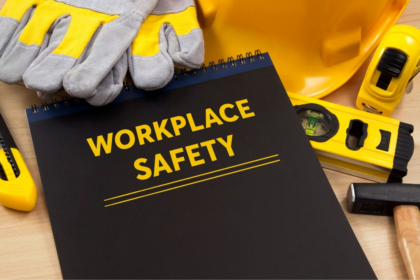Ergonomics and Office Safety: New Regulations to Promote Healthier Workspaces. June 11, 2024
By Jane Doe, Staff Writer
In a significant move to enhance workplace health, new regulations aimed at promoting ergonomic workspaces have been introduced. These measures seek to address common office-related health issues such as repetitive strain injuries (RSIs), back problems, and other ailments associated with prolonged desk work.
The Growing Concern
As more people engage in office work, concerns about the physical toll on employees have increased. The rise in remote work during the COVID-19 pandemic further highlighted the need for ergonomic considerations, as many home offices were not equipped to support healthy working conditions.
Studies have shown that improper workstation setups can lead to a variety of health issues. RSIs, including carpal tunnel syndrome and tendinitis, have become more prevalent. Additionally, prolonged sitting and poor posture contribute to back pain, neck strain, and musculoskeletal disorders.
Key Components of the New Regulations
The new regulations mandate several critical changes designed to foster healthier office environments:
- Ergonomic Assessments: Employers are now required to conduct regular ergonomic assessments of workstations. This includes evaluating desk height, chair support, monitor placement, and the arrangement of keyboards and mice.
- Adjustable Furniture: Workplaces must provide adjustable furniture to allow employees to customize their workstations. This includes height-adjustable desks, ergonomic chairs with lumbar support, and monitor stands.
- Employee Training: Regular training sessions on proper ergonomics and posture are now compulsory. These sessions will educate employees on the importance of taking breaks, stretching, and adjusting their work environments to minimize strain.
- Break Schedules: Employers must implement structured break schedules, encouraging employees to take short breaks every hour to stand, stretch, and move around. This practice helps reduce the risk of RSIs and alleviates muscle fatigue.
- Remote Work Provisions: For remote workers, companies are required to provide ergonomic guidelines and, if necessary, equipment to ensure home offices meet the same standards as traditional workplaces.
Impact on Businesses and Employees
These regulations are expected to have a profound impact on both businesses and employees. For companies, the initial investment in ergonomic furniture and training may be significant. However, experts argue that the long-term benefits, including increased productivity and reduced absenteeism due to health issues, will outweigh the costs.
Employees stand to benefit the most from these changes. Enhanced comfort and reduced pain can lead to higher job satisfaction and improved overall well-being. In turn, this can foster a more positive and productive work environment.
Industry Reactions
Reactions from the business community have been mixed. While some companies have expressed concerns about the financial implications, others have embraced the changes as a necessary evolution in workplace standards.
“Investing in ergonomic solutions is not just about compliance; it’s about valuing our employees’ health and productivity,” said Jane Smith, CEO of Tech Innovators Inc. “We believe that these regulations will ultimately create a more sustainable and efficient workplace.” Ergonomics and Office Safety
Looking Ahead
As these regulations take effect, ongoing monitoring and feedback will be crucial to ensure their success. The government plans to conduct periodic reviews and updates based on the latest ergonomic research and workplace trends.
Ultimately, the goal is to create a safer, healthier office environment that supports the physical well-being of employees, reducing the incidence of work-related health issues and fostering a culture of care and efficiency.
For now, businesses and employees alike must navigate this transition, working together to build workspaces that promote both health and productivity.














